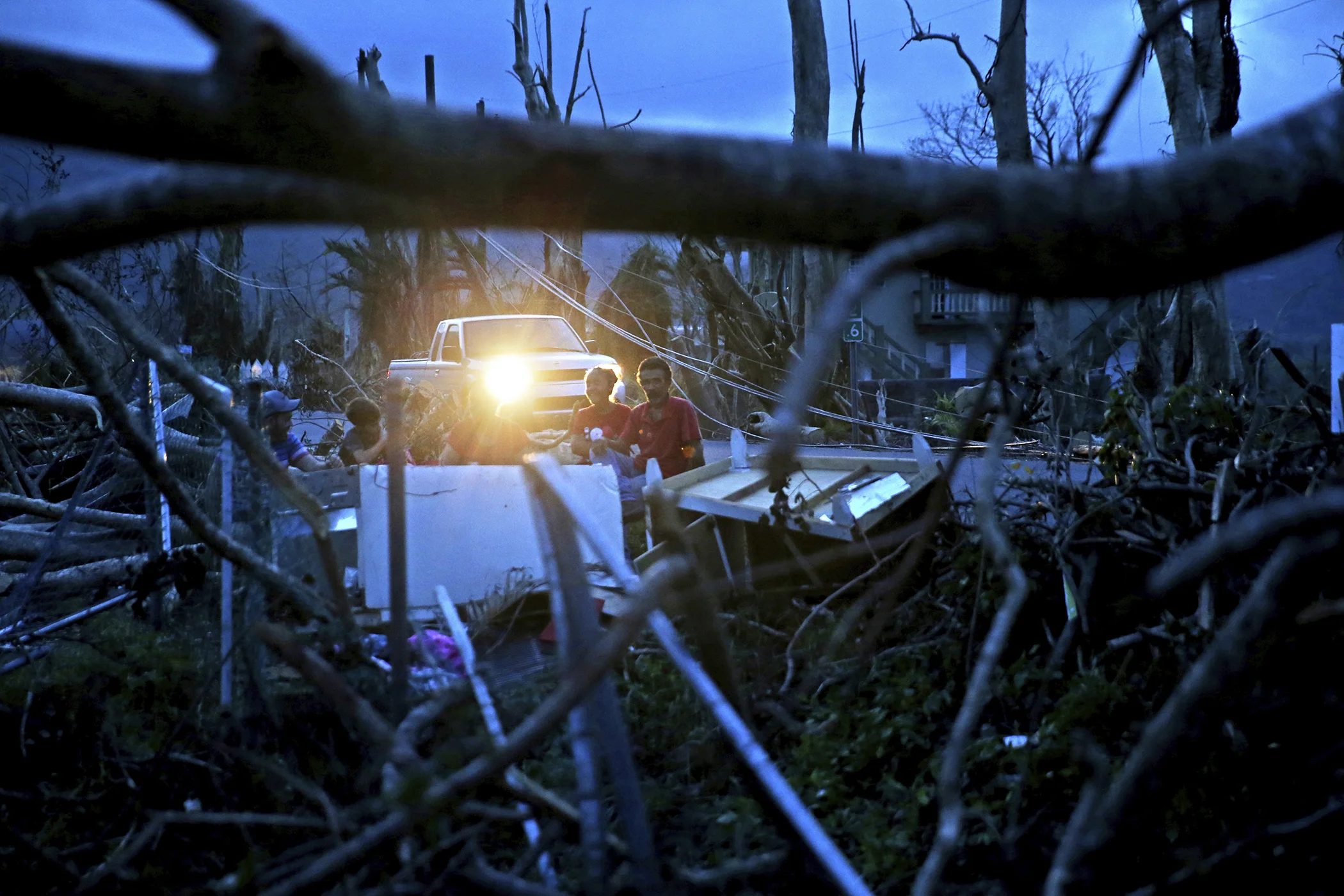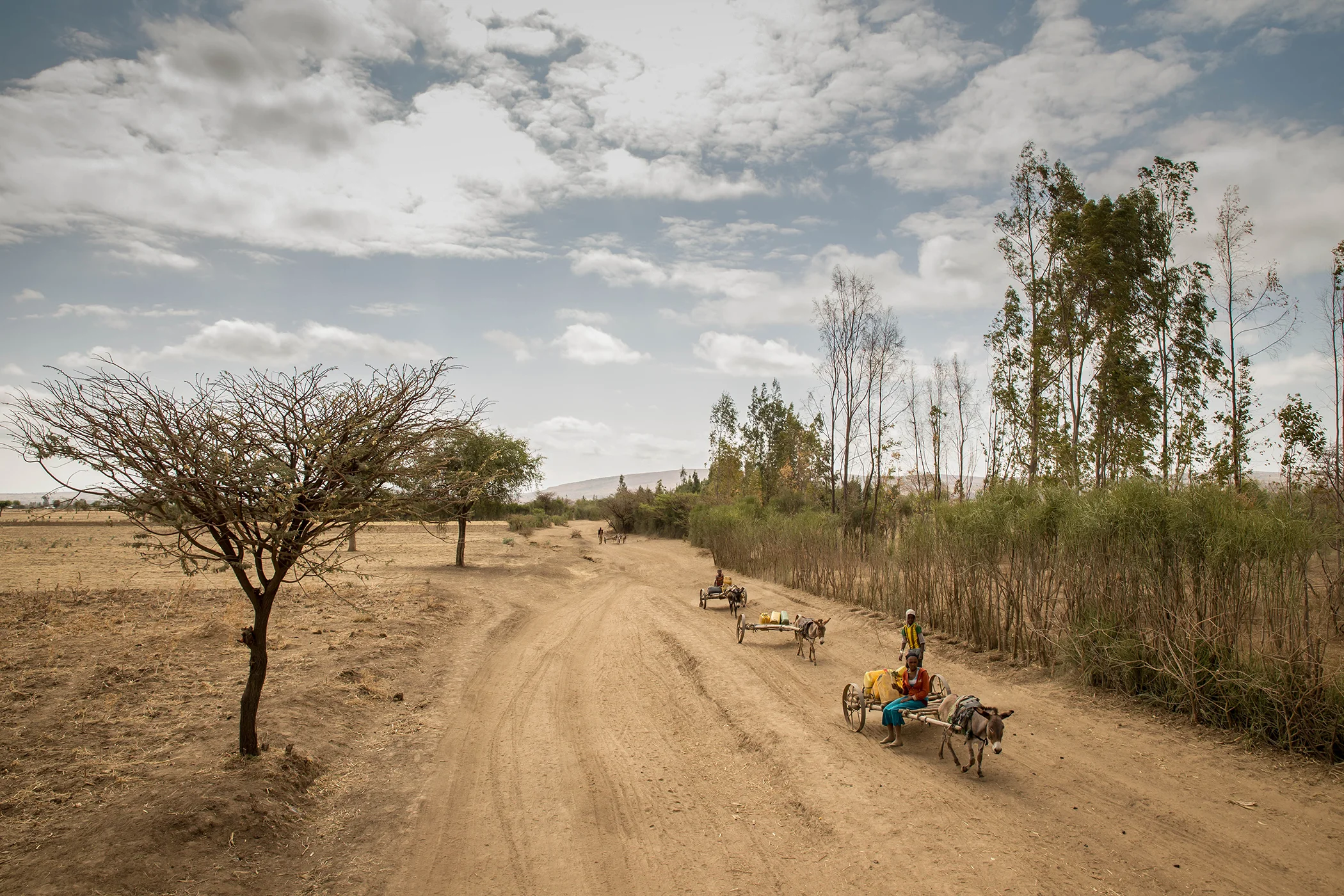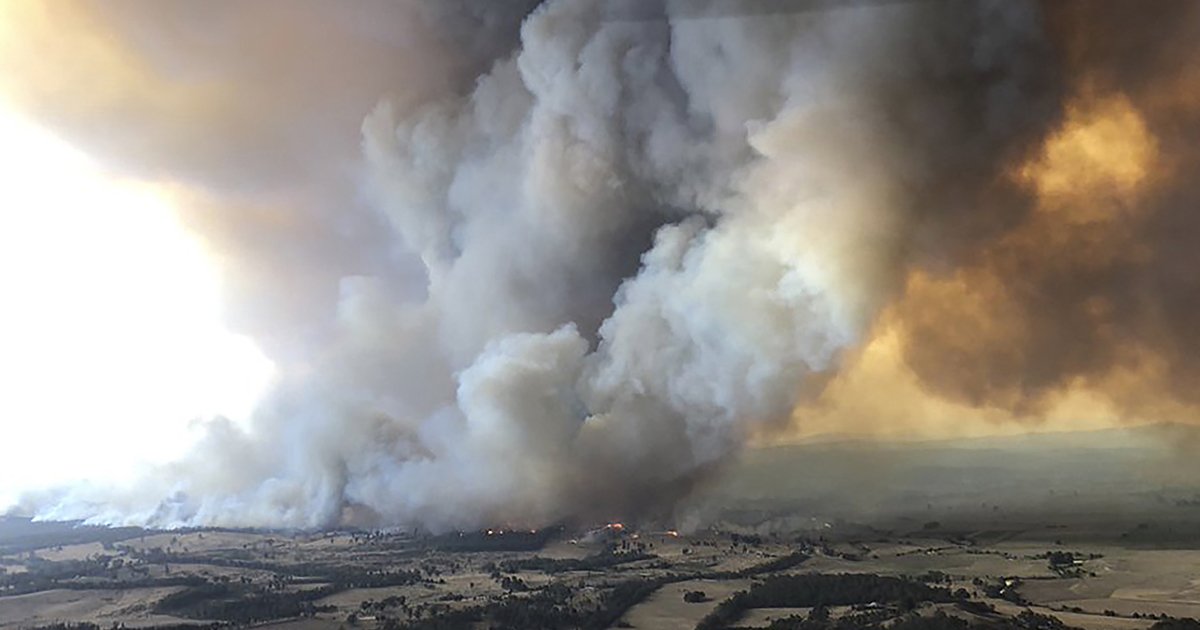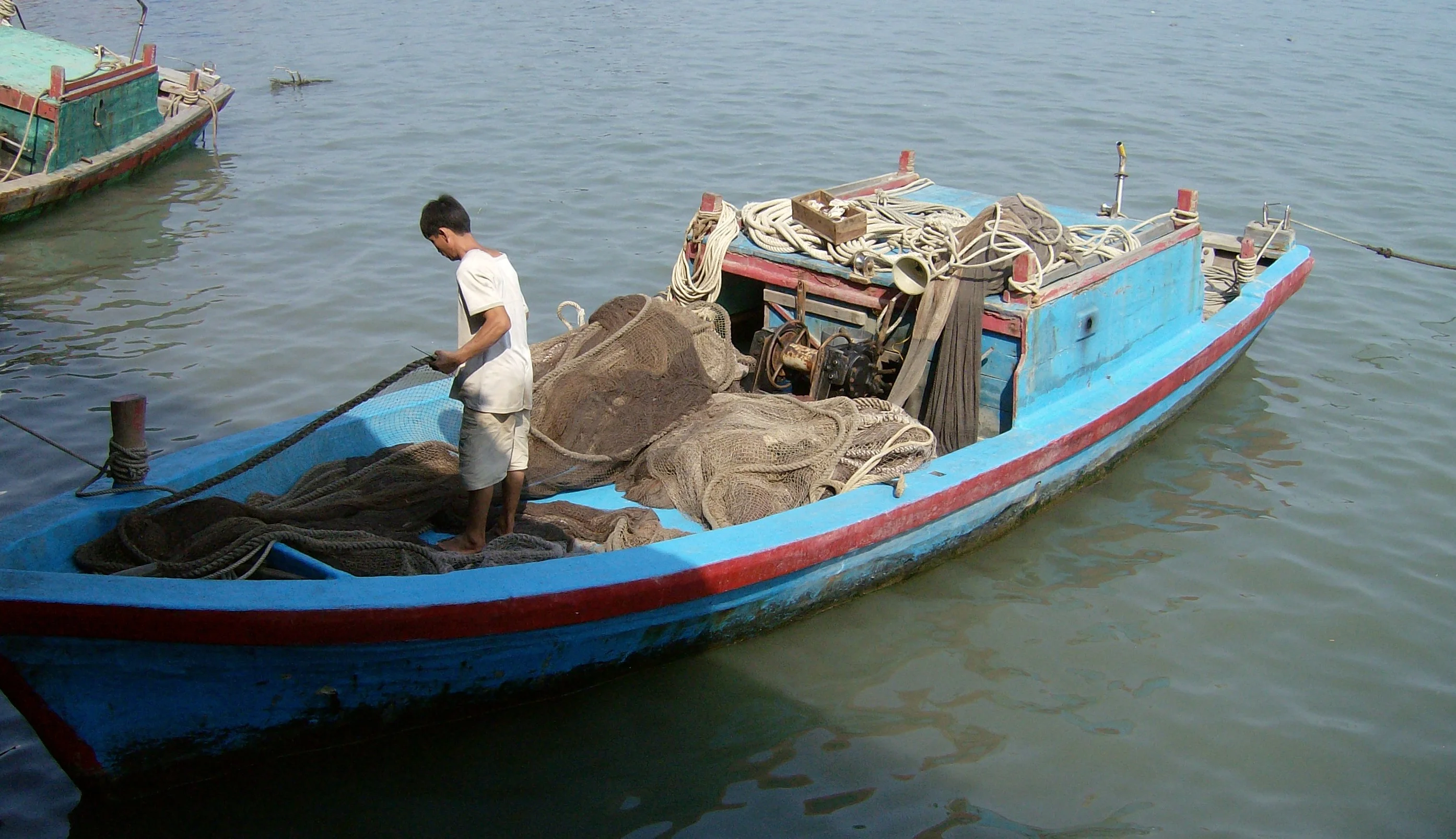What do Leonardo DiCaprio, Pope Francis, and the United Nations Special Rapporteur on extreme poverty and human rights have in common?
They’ve all used their platforms to highlight the link between poverty and climate change—and said we can't solve one without addressing the other.
Pope Francis has called the global failure to act on climate change “a brutal act of injustice toward the poor," while DiCaprio wisely pointed out “the environment and the fight for the world’s poor are inherently linked." Philip Alston, the UN rapporteur, said in 2019 that a "climate apartheid" is right around the corner.
Climate change looms over all countries, promising severe droughts, supercharged storms, and blistering heat waves. But these consequences are unevenly felt around the world.
Above all, they threaten the most vulnerable populations across the globe.
“Climate change is going to amplify the already existing divide between those who have resources and those who do not,” Eliot Levine, director of the environment technical support Unit at Mercy Corps, told Global Citizen.
“We are already seeing the impacts of climate change around the world, and the latest IPCC reports clearly illustrate that we are very quickly heading towards experiencing them at a greater scale and degree of severity than we had previously understood," he added.
As global temperatures and sea levels rise, as the oceans acidify and precipitation patterns get rearranged, people living in poverty are the most severely impacted. Since climate change affects everything from where a person can live to their access to health care, millions of people could be plunged further into poverty as environmental conditions worsen.
This is especially true for poor people living in low-income countries. Just as climate change deepens inequalities within a country, it also further stratifies international relations because some nations are more threatened by it than others. And poor countries have fewer resources to deal with the problem.
“The world’s poorest communities often live on the most fragile land, and they are often politically, socially, and economically marginalized, making them especially vulnerable to the impacts of climate change,” Christina Chan, director of the World Resource Institute’s Climate Resilience Practice, told Global Citizen. “More frequent and intense storms, flooding, drought, and changes in rainfall patterns are already impacting these communities, making it difficult for them to secure decent livelihoods.”
Climate Refugees
 Evan Mandino, right, sits with neighbors on a couch outside their destroyed homes as sun sets in the aftermath of Hurricane Maria, in Yabucoa, Puerto Rico, Sept. 26, 2017.
Evan Mandino, right, sits with neighbors on a couch outside their destroyed homes as sun sets in the aftermath of Hurricane Maria, in Yabucoa, Puerto Rico, Sept. 26, 2017.
In 2017, Hurricane Maria slammed into Puerto Rico, becoming the deadliest hurricane in recent US history.
More than two years later, the island is still recovering from the disaster. Homes need to be repaired and rebuilt, water supplies have not been fully restored, schools and hospitals remain shuttered, and the island’s economy has been heavily disrupted.
Throughout Puerto Rico, the poorest communities were hit the hardest and are the furthest away from recovery. While many wealthy people left the island or used their resources to rebuild after the disaster, poor families have had to wait months or years for assistance from an underfunded relief effort.
This pattern has played out around the world in recent years — an unusually powerful storm makes landfall, causes catastrophic harm, and deepens inequalities.
And it’s a pattern that will only become more common, according to experts.
Coastal communities hold an estimated 37% of the global population — they’re hubs of commerce and culture, and have fueled global development. Yet, for all their historic significance, these environments could be emptied out in the decades ahead as natural disasters intensify and sea levels rise.
More than 570 coastal cities could be affected by sea level rise by 2050. In that same period, as many as 1 billion people could be displaced by environmental hazards—primarily sea level rise and natural disasters. Displacement can push a person into poverty by stripping them of their home, profession, and networks. Many people who are displaced are unable to carry their former wealth into their new contexts and struggle to find work and regain their stability.
An estimated 100 million people living in developing countries could be pushed into poverty by climate change by 2030.
“Not only are people within these contexts ill equipped to adequately prepare for these extreme events, but they’re also ill equipped to recover from them afterwards,” Levine said.
Some cities, such as Jakarta, have proposed a “managed retreat” to avoid sudden displacements. The Indonesian capital, with a population of more than 10 million, has decided to relocate to the North of the country instead of trying to mitigate the climate risks it faces. In the meantime, hundreds of thousands of people from the city, particularly those living in slums, have already been displaced by storms and sea level rise.
People are being displaced by drier phenomena as well. Farmers throughout sub-Saharan Africa have had to abandon their land due to devastating droughts in recent years. Rising temperatures, meanwhile, are forcing an untold number of people around the world to pack up and leave their homes.
The surge in refugees arriving from Central America to the US has also gone up in part due to soaring temperatures and droughts that have pushed farmers off their land.
To make matters worse, countries around the world are becoming more hostile to migrants and refugees, a problem that could get considerably worse as the number of those displaced by environmental factors grows.
Food and Water Scarcity
 Ethiopia has been experiencing historic droughts, which has led to water scarcity and food insecurity for millions.
Ethiopia has been experiencing historic droughts, which has led to water scarcity and food insecurity for millions.
Ethiopia has been experiencing historic droughts, which has led to water scarcity and food insecurity for millions.
For the first time in years, world hunger rose in 2019.
The sharpest increase was seen in sub-Saharan Africa, where years of severe drought has ruined agricultural output.
In Zimbabwe, where more than 7 million people require food aid, the 2019 harvest was half as large as the year before, and this year’s harvest is on track to be similarly diminished.
In Southern Africa alone, more than 45 million people face food shortages.
Crop yields vary from year to year for all sorts of reasons — lack of resources and technology, economic downturns, conflict, and political dysfunction. But climate change is a particularly disruptive variable that’s reshaping food production around the world, threatening up to half a billion people with poverty and food insecurity.
Droughts have become ruinously prolonged in sub-Saharan Africa, for instance, a shift that has caused widespread crop failures, cattle deaths, food shortages, and poverty.
Similar agricultural disruptions are occurring around the world, with similar economic consequences. Agricultural output could decline by as much as 30% in the years ahead, threatening the livelihoods of 500 million smallholder farmers at a time when the demand for food is expected to rise by up to 98% by 2050.
“The disruptions that climate change brings to agricultural producers and their ability to put food on the table is immense and growing rapidly," Levine said. “It’s also affecting their ability to produce foods that provide a balanced set of nutritional components. That was hard enough without climate change, and now there’s this added layer of complexity.”
Droughts intensified by climate change are putting immense pressure on the world’s freshwater supplies. Already, 1 in 4 people around the world face dire water shortages. By 2050, it's predicted, as many as 50% of people could face water shortages.
In recent years, major cities like São Paulo and Cape Town have almost entirely run out of water, giving the world a peek into a future where fierce water rationing becomes the norm.
In Cape Town, for instance, water police were deputized to patrol neighborhoods and crack down on wanton water use.
Water shortages also threaten regional security in parts of the world. The war in Syria has been partly blamed on a drought that caused rural workers to migrate to urban areas in search of opportunity. The ensuing lack of opportunity led to mass protests and unrest that eventually helped trigger the war.
“You already see contentious discussions around water between nations with existing national and international policies and processes in place,” Levine said. “What happens when these discussions amplify in places where there are not international agreements around water use? How do you ensure there is equitable distribution of water when there’s not even domestic rules, let alone international agreements?”
Air Pollution
 Wildfires rage under plumes of smoke in Bairnsdale, Australia on Dec. 30, 2019.
Wildfires rage under plumes of smoke in Bairnsdale, Australia on Dec. 30, 2019.
Wildfires rage under plumes of smoke in Bairnsdale, Australia on Dec. 30, 2019.
The ongoing forest fires in Australia have caused tens of thousands of people to flee their homes. But escaping the flames didn't put people out of harm's way. Those who managed to flee are still being affected by the intense pollution being released into the air.
Forest fires are increasing in frequency and severity because of climate change and they’re harming the health of millions of people annually. All forms of air pollution, including from factories and vehicles, lead to an estimated 8.79 million premature deaths each year.
Air pollution disproportionately affects impoverished people who live in densely packed areas, close to industrial sites, and are unable to afford purifiers or trips away from their homes when the air becomes especially toxic. Low- and middle-income countries account for nearly 92% of all pollution-related deaths.
Forest fires are increasingly corroding gains that have been made in air quality.
In Brazil, the 2019 fires in the Amazon rainforest made the air poisonous for children, according to the World Health Organization.
Climate change affects people’s health in other ways, too. Deadly heat waves are becoming more common in parts of the world, creating conditions that endanger even healthy people. These heat waves, while felt universally, primarily threaten people in poverty who are unable to afford air conditioners and protection from water shortages.
“Beyond a certain point it becomes almost impossible to adapt [to climate change],” said Mahir Ilgaz, associate director of advocacy and campaigns at 350.org. “We’ve seen in places like Mumbai, temperatures are fast approaching conditions that are inhospitable to human habitation."
Rising temperatures are also expanding the ranges of pests like mosquitoes that carry life-threatening diseases, such as malaria, that have historically impacted people living in poverty.
Water- and food-borne diseases are becoming more common too as increased flooding from extreme precipitation events causes pollution in waterways and farmland.
The growing health problems associated with climate change are magnified by the lack of health care around the world, especially in poor communities. An estimated 1 in 5 countries have a health care plan for coping with climate change, according to the United Nations (UN).
Meanwhile, more than half of the global population doesn’t have reliable access to health care, and nearly 100 million people are pushed into poverty every year because of health issues, according to the World Bank.
Endangered Livelihoods

Smallholder farmers depend on their crops for both food and income. When droughts, natural disasters, or some other climate change-related event push them off their land, they often sink deeper into poverty.
In wealthy countries, insurance acts as a safety net for farmers, allowing them to cope with bad crop yields and recover from disasters in a timely manner. Farmers in low-income countries, meanwhile, often don’t have this support.
“Recovery for them means a longer, harder, more dangerous process,” Levine said.
The same goes for small-scale fisheries in developing countries who depend on their daily catch to get by.
Climate change is heating up the oceans far faster than land environments, destabilizing marine ecosystems, and causing fish populations to migrate. All of this makes it harder for fishers to meet their quotas.
Livelihoods tied to subsistence — like farmers and fishermen in developing countries — are threatened by climate change and the people who fall into these categories often don’t have the resources to become climate resilient.
Farming and fishing are just two professions, but they represent hundreds of millions of people worldwide. In many countries, agriculture is the primary engine of the economy, with fishing being a major source of commerce as well.
The economic shocks created by climate change will be disruptive. Poor families will struggle to accommodate the rising costs of food and water associated with droughts and natural disasters, according to the World Bank.
Climate change is also expensive for developing countries that have to redirect budgets to cope with environmental crises. In 2019, countries collectively spent $150 billion on climate change-related disasters, and that’s not even accounting for funds spent on updating infrastructure and creating climate resilience.
The money spent dealing with climate change also means less money spent on health care, education, job training, and other poverty reduction initiatives.
The Way Forward
The fight against climate change and poverty are intertwined. Investments made to mitigate or adapt to climate change will inevitably reduce poverty, and investments made to reduce poverty will better protect people against the growing environmental crisis.
Countries can distribute hardier and more nutritious seeds to farmers, while providing them access to loans, grants, markets, technologies, and data that can boost harvests, according to the WRI.
They can invest in reforestation and coastline restoration projects to improve water security, protect communities from natural disasters, and create economic opportunities.
Above all, countries can reduce greenhouse gas emissions and transition to clean energy economies to prevent climate change from escalating in the future. Switching from fossil fuels to clean energy sources could add upwards of $26 trillion to the global economy by 2030.
“Dismantling the pillars of support for the fossil fuel industry is crucial,” Ilgaz said. “It takes many shapes — divestment, cutting subsidies for infrastructure investments. The starting point should be keeping fossil fuels in the ground.”
Organizations like the Green Climate Fund and the International Fund for Agricultural Development are working to both prepare communities for increasing climate risks and enable them to thrive in changing climates.
Ilgaz said that countries need to develop just transition plans that help people working in industries dependent on fossil fuels find new sources of income and stability. These just transition plans must also reimagine humanity’s relationship to nature and the overexploitation of natural resources, he said.
“Climate change is not an isolated issue, it’s linked to a larger ecological crisis that we see more and more these days,” Ilgaz added.
Crucially, these efforts have to involve the input of local stakeholders.
“While communities are at the frontlines of climate change impacts, they rarely have an effective voice in prioritizing, decision-making, and implementing the actions that most affect them,” said Chan of WRI. “In terms of interventions, none may be more important than increasing the volume of devolved and decentralized funding available to local governments, community-based organizations, and others working at the local level to identify, prioritize, implement, and monitor climate adaptation solutions.”
Levine stressed that inadequate financing is the main thing preventing climate resilience programs from taking off in vulnerable areas.
“We could talk about water security, early warning systems, and smart agriculture, but none of these things are going to be a reality if we don’t increase funding,” he said. “If we don’t ensure funds get to the ground, if we don’t have the ability to put strategies into place, then the conversation is moot.”